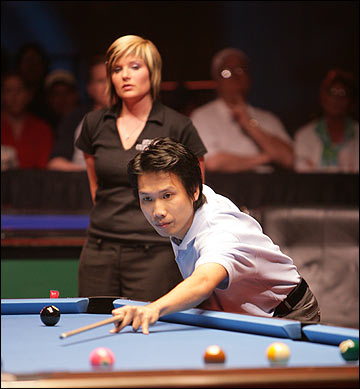I DEFINITELY agree with this. With the "index-finger-on-top-of-middle-finger" style of closed bridge, an internal "V"-channel is created, and the orientation of that "V"-channel is more important than the palm of your bridge hand on the table. For instance, in the first photo at the top, the OP has the entire bridge hand "collapsed" and flat on the table, which means the "V"-channel formed by the index finger pressing down upon the middle finger, is laying on its side, like this: ">". So the natural "rise" of the cue -- as the shaft rides over that sideways "V" -- moves from right to left during the forward stroke, and left to right on the back stroke. ("Rise" means the exact centerline of the shaft, btw. As the taper of the shaft encounters the "V" channel laying on its side, instead of the centerline of the cue moving up and down, it's instead moving left and right.)
You'll see most pros, for this reason, arching their bridge hand upwards so that the palm is away from the table.
Or, in Alex Pagulayan's case, he "scrunches" the index and middle fingers inwards, to orient the "V" channel so that it is straight up and down, even when the palm is on the table.
In all these cases, the intent is to strive for proper alignment of that internal "V"-channel so that it is oriented as straight up and down (and not laying on its side) as possible.
-Sean




